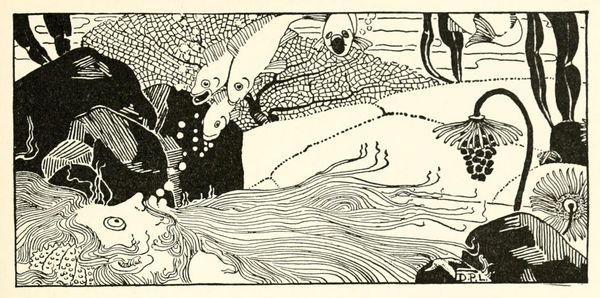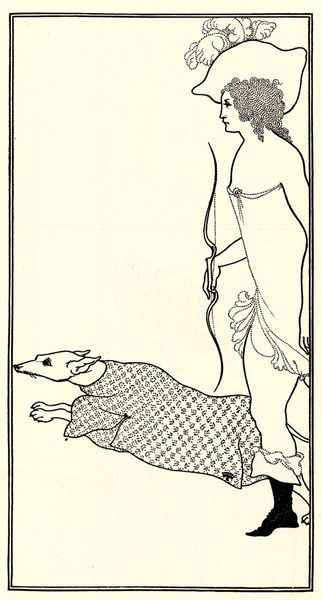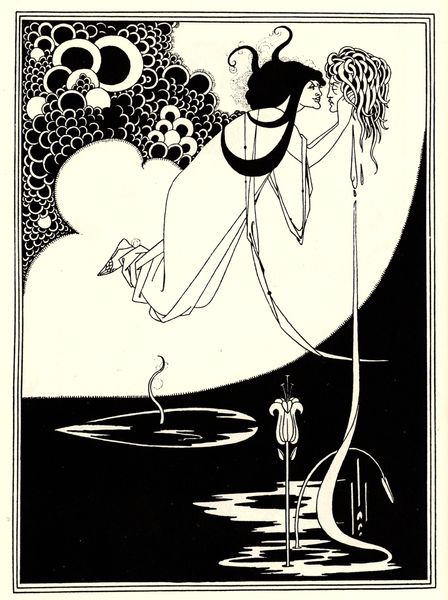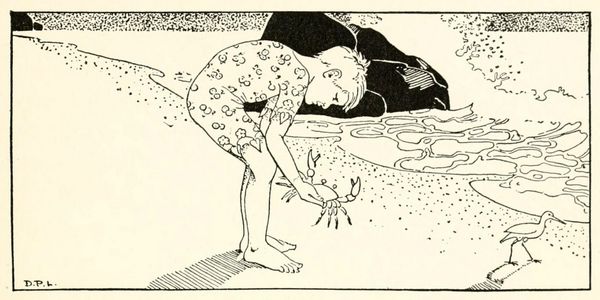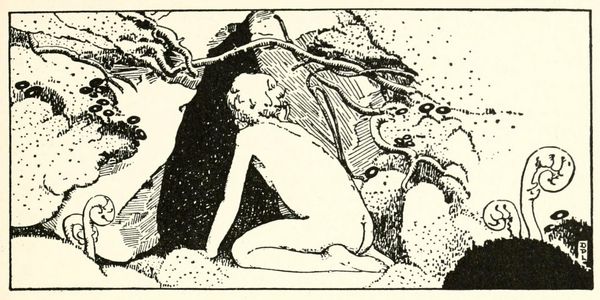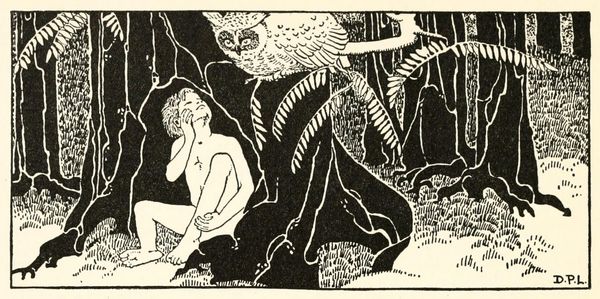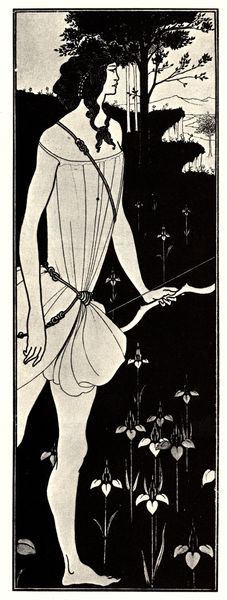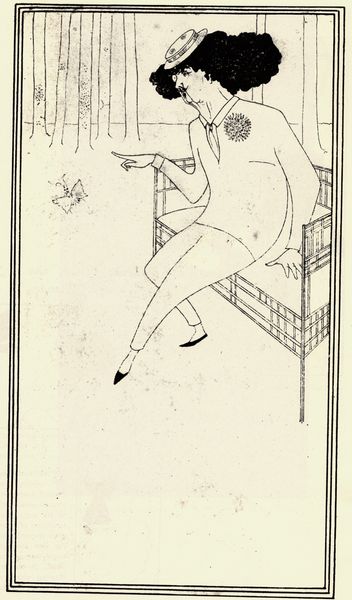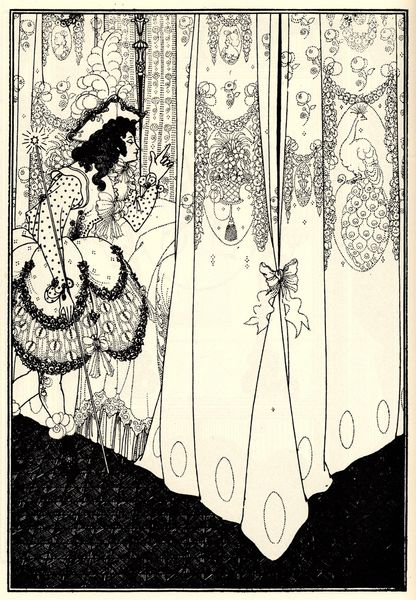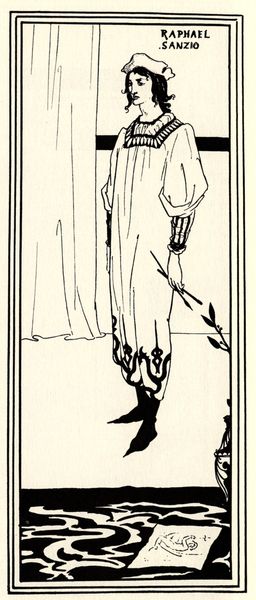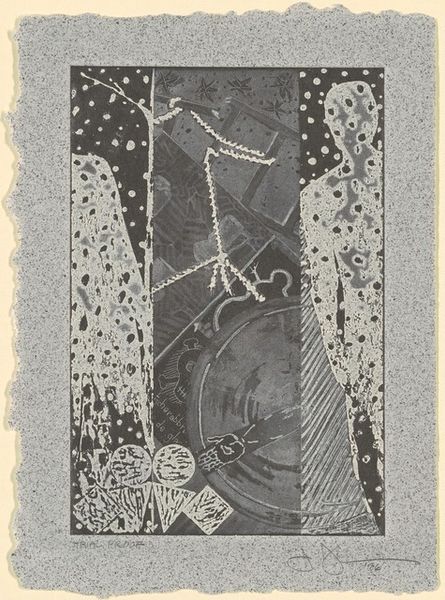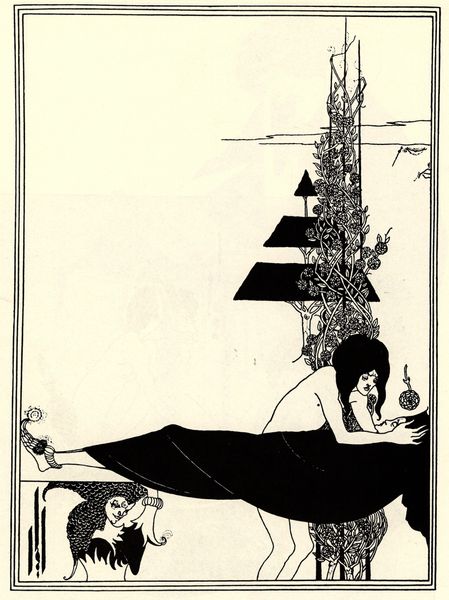
drawing, paper, ink
#
drawing
#
art-nouveau
#
pen illustration
#
line drawing illustration
#
figuration
#
paper
#
ink line art
#
ink
#
line
#
symbolism
Copyright: Public domain US
Curator: The work we're looking at today is entitled "A Little Boy Lost." It's a drawing by Dorothy Lathrop, created in 1920 using ink on paper. The piece resonates with many features common to art nouveau and symbolism from the early 20th century. Editor: My immediate response is one of whimsy tinged with melancholy. The high contrast black and white ink drawing, especially the stippled background, gives it a dreamy, almost ethereal quality. Curator: Indeed. Lathrop, active during a period marked by societal shifts and anxieties following World War I, contributed illustrations to numerous children’s books. These illustrations served not only to entertain but also subtly reflected a changing understanding of childhood innocence. Her work often challenged societal norms regarding childhood. Editor: You can see that tension in the stark lines contrasting the smooth open areas of skin. Also notice how Lathrop positions the boy in profile and elevates his gaze, reinforcing themes of idealism. And the choice of rendering an almost medieval, stylized stringed instrument… Curator: The banjo provides a fascinating symbolic dimension within this composition, doesn’t it? What is typically conceived as popular or folk would here carry associations with romanticized artistic creativity and potentially highlight the cultural tensions of the era. In a way, we can see anxieties around modernity and folk traditions as intertwined in this unique piece. Editor: Fascinating point. Looking at the texture created using line work, the stylized forms feel flattened which almost feels otherworldly; this enhances the symbolism without overly literal readings. Curator: It's important to remember that children's literature often becomes a stage for debates concerning education, morality, and the very construct of childhood. Lathrop used her illustrations to negotiate these discussions. Editor: I’ll leave our listeners today contemplating the unique visual poetry, and how this piece embodies an elegant tension between the innocence and the unknown that defines its period so poignantly. Curator: Agreed. Consider what public narratives about childhood are conveyed via cultural vehicles and imagery still. I wonder, what will the cultural analysis reveal a hundred years hence?
Comments
No comments
Be the first to comment and join the conversation on the ultimate creative platform.
